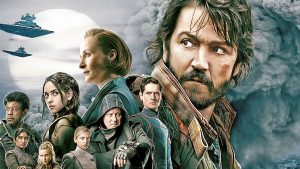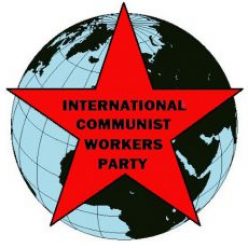
The TV series Andor (Disney+) is a prequel to the Star Wars film Rogue One. It traces the origins of the Rebellion against the Empire.
Andor is part of one of the most commercially successful franchises in media history. But it is a surprisingly radical text. It explores themes of class oppression, labor exploitation, carceral systems, and revolutionary awakening.
When discussing the series with friends, most are quick to recall with excitement the violent uprisings and acts of defiance it portrays. Yet despite its radical tone, Andor remains a Disney production. It operates within the ideological boundaries of a capitalist-owned media empire. This contradiction raises important questions about how far a revolutionary narrative can go when it is filtered through corporate interests.
Across its two seasons, Andor presents a vivid depiction of life under a fascist-capitalist regime (the Empire). It shows the gradual emergence of class consciousness among the oppressed (the Rebels).
Crucially, the show rejects the idea that rebellion is destiny. Instead, it portrays revolution as a response to material conditions and the result of political education. This is perhaps Andor’s greatest strength: its grounded depiction of how ordinary people begin to resist systemic violence.
The show marks a departure from the traditional Star Wars mythos of “chosen ones” and prophetic heroes. Instead, it emphasizes collective action. Andor insists that revolutions are not built on magical saviors but on the accumulated struggle of people crushed under imperial rule.
It explores themes central to communist theory. These include the failures of reformism, the awakening of class consciousness, and the tension between idealism and dialectical materialism.
However, Andor has clear limitations. Most notably, it stops short of articulating a revolutionary solution. The show provides the “why” of rebellion but not the “what comes next.” There’s no vision for a post-Imperial society. There’s no conversation around collective ownership, worker-led governance, or redistributive justice. The rebellion is framed as anti-Empire, but not pro-anything concrete. This absence of a positive program makes the revolution feel directionless.
Andor effectively portrays the “negation” of Empire but never reaches the “negation of the negation”: the creation of a truly transformed, communist galaxy.
It’s also frustrating that those who once held power — and allowed the Empire to rise — are among the leaders of the rebellion. Andor claims to center “the people.” But the narrative often focuses on elite characters like Mon Mothma and Luthen Rael.
Working-class characters like Brasso and Maarva play important roles. But strategic decisions consistently flow from the top down. This reinforces a liberal framework in which revolution is managed by enlightened elites rather than driven by mass, organized action.
Lastly, the show’s radical themes are inevitably diluted by its origins. It’s a story of anti-fascist, anti-capitalist struggle — produced by Disney, one of the most powerful capitalist corporations on Earth. That contradiction haunts every frame of the show, limiting how far it can truly go.
Yet for all its flaws, Andor remains among the most compelling Star Wars material to date. Conversations I’ve had about the show almost always involve connections to present-day capitalism.
As a friend said, “Andor does a good job of lifting the veil to show who’s really pulling the strings.” Even without a fully articulated revolutionary program, the show reveals many of the tools governments use to divide, pacify, and control the working class.

